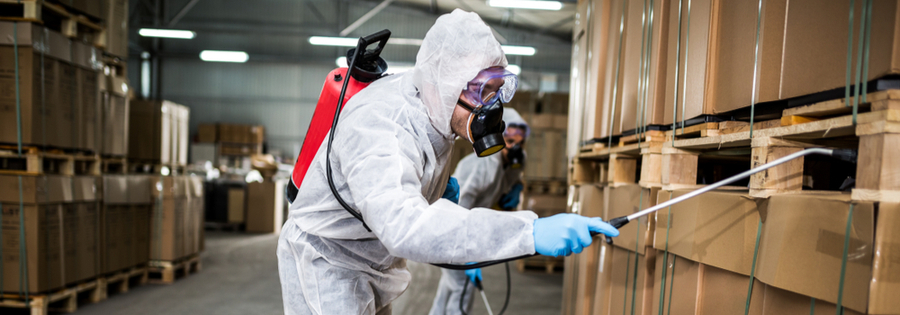Pest Control Auckland Specialists: Quality Providers for Residences and Services
Pest Control Auckland Specialists: Quality Providers for Residences and Services
Blog Article
Recognizing Various Sorts Of Insect Control Approaches and Their Efficiency
When considering parasite control approaches, it is necessary to recognize the diverse methods available and their varying degrees of performance. By checking out the subtleties of these pest control techniques, a comprehensive understanding of how to deal with insect problems can be developed.
Chemical Bug Control Methods
Chemical pest control approaches play a pivotal function in effectively managing and removing pest invasions in numerous settings. One of the essential advantages of chemical parasite control is its capability to give quick and targeted solutions to pest troubles. Pest Control Auckland.
Nevertheless, it is essential to think about the prospective threats and drawbacks related to chemical parasite control approaches. Overreliance on chemicals can lead to the growth of chemical resistance in bugs, making them more difficult to manage in the future. In addition, using particular chemicals can have hazardous effects on non-target organisms, the atmosphere, and human wellness otherwise applied correctly.

Biological Insect Control Approaches
Making use of natural killers and virus to handle insect populaces efficiently, organic insect control approaches offer a environment-friendly and sustainable method to pest monitoring. By introducing or advertising the activity of microorganisms that naturally victimize or infect bugs, such as ladybugs for aphid control or certain bacteria for caterpillar invasions, organic control can help keep bug populations at workable levels without the requirement for artificial chemicals. This approach is specifically advantageous for natural farming practices, as it prevents making use of potentially damaging materials while keeping plant wellness.

Physical Bug Control Techniques
While biological insect control techniques focus on taking advantage of natural predators and microorganisms, physical pest control methods make use of physical and mechanical barriers to manage pest populations. These techniques are frequently taken into consideration eco-friendly as they lessen using chemicals. Physical pest control includes methods such as capturing, making use of barriers like webs or screens, and literally removing parasites from the area.
Traps are typically made use of in physical insect control to record and get rid of insects like bugs and rats. These catches can be baited with food or pheromones to attract the pests, leading them to a had area where they can be easily thrown away. An additional physical method is using barriers such as displays, fencings, or nets to stop insects from getting in or infesting particular areas. For instance, mounting fine mesh screens on home windows can assist shut out mosquitoes and flies.
Natural Insect Control Approaches
Including plant-based repellents and natural killers is a vital strategy in applying efficient all-natural insect control methods. By encouraging the visibility of beneficial bugs like ladybugs, lacewings, or predacious mites, gardeners can naturally regulate pest populations. These killers feed on usual garden bugs such as caterpillars, aphids, and mites, assisting to maintain a balanced environment without the need for chemical interventions.

Furthermore, implementing cultural practices such as plant rotation, buddy planting, and preserving appropriate plant health can additionally improve the efficiency of all-natural insect control methods. These methods not only aid in stopping insect invasions however additionally advertise biodiversity and general ecological community durability. By incorporating these natural methods, individuals can efficiently manage bugs my link while lessening ecological influence.
Integrated Parasite Administration (IPM) Strategy
Implementing an Integrated Bug Management (IPM) strategy is essential for properly regulating parasite populations while decreasing dependence on chemical pesticides. IPM is a thorough and sustainable approach that combines numerous bug control techniques to achieve lasting remedies. This method check here concentrates on prevention, control, and tracking to deal with pest issues in an ecologically friendly way.
IPM integrates biological, cultural, physical, and mechanical strategies with the minimal and strategic usage of chemicals when necessary. By highlighting proactive measures such as habitat alteration, organic control, and exclusion, IPM intends to decrease pest populaces and their impact on the environment. Normal surveillance is essential in IPM to analyze parasite degrees precisely and determine the most suitable control approaches.
Among the key advantages of IPM is its ability to minimize the dangers connected with extreme pesticide use, such as environmental contamination and harm to non-target microorganisms. Additionally, IPM advertises an extra alternative technique to pest monitoring by taking into consideration the general ecosystem dynamics. Generally, the IPM method provides a effective and lasting remedy for parasite control while promoting ecological responsibility.
Verdict
To conclude, understanding the various types of parasite control methods and their efficiency is essential in successfully managing parasite invasions. Chemical, organic, physical, and natural insect control techniques each have their own benefits and constraints. Integrated Insect Management (IPM) approach, which integrates numerous techniques for lasting bug control, is increasingly being acknowledged as a all natural and environmentally friendly service. By using a combination this content of these companies, approaches and individuals can successfully regulate insects while decreasing harm to the atmosphere.
Chemical parasite control approaches play a pivotal function in effectively managing and removing pest invasions in different settings.Making use of all-natural killers and virus to manage parasite populations effectively, biological bug control techniques supply a green and sustainable method to pest management. By introducing or promoting the activity of microorganisms that naturally prey on or infect pests, such as ladybugs for aphid control or specific microorganisms for caterpillar invasions, biological control can aid keep parasite populations at manageable levels without the demand for artificial chemicals.While organic bug control techniques focus on taking advantage of all-natural killers and pathogens, physical pest control approaches utilize physical and mechanical obstacles to take care of insect populaces. Integrated Insect Monitoring (IPM) approach, which integrates numerous methods for lasting parasite control, is progressively being recognized as a ecologically friendly and alternative remedy.
Report this page